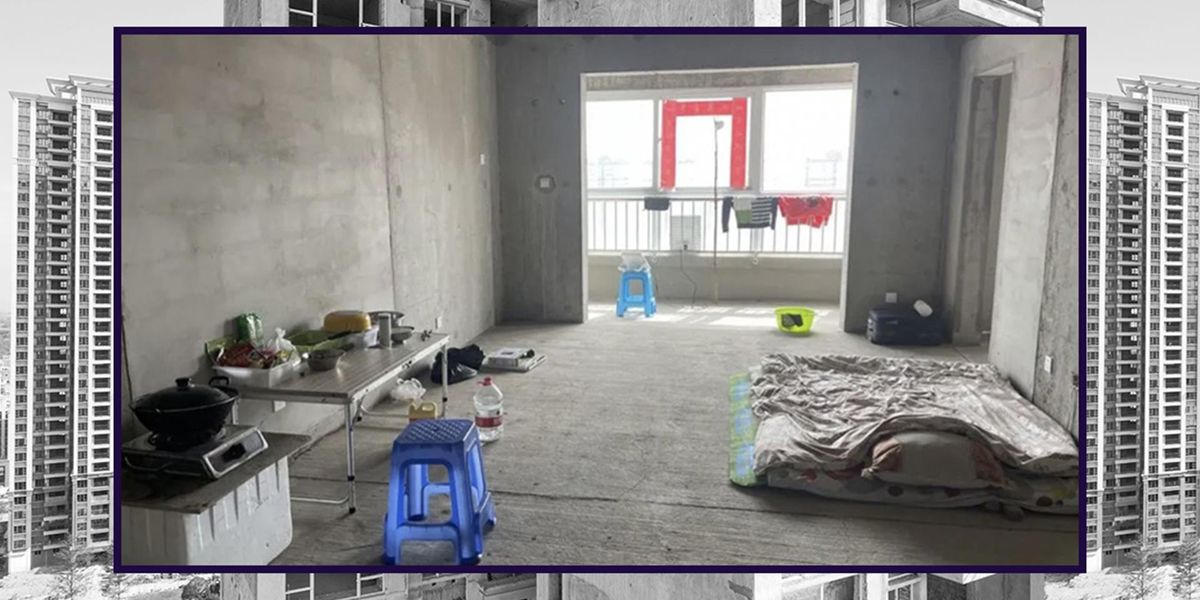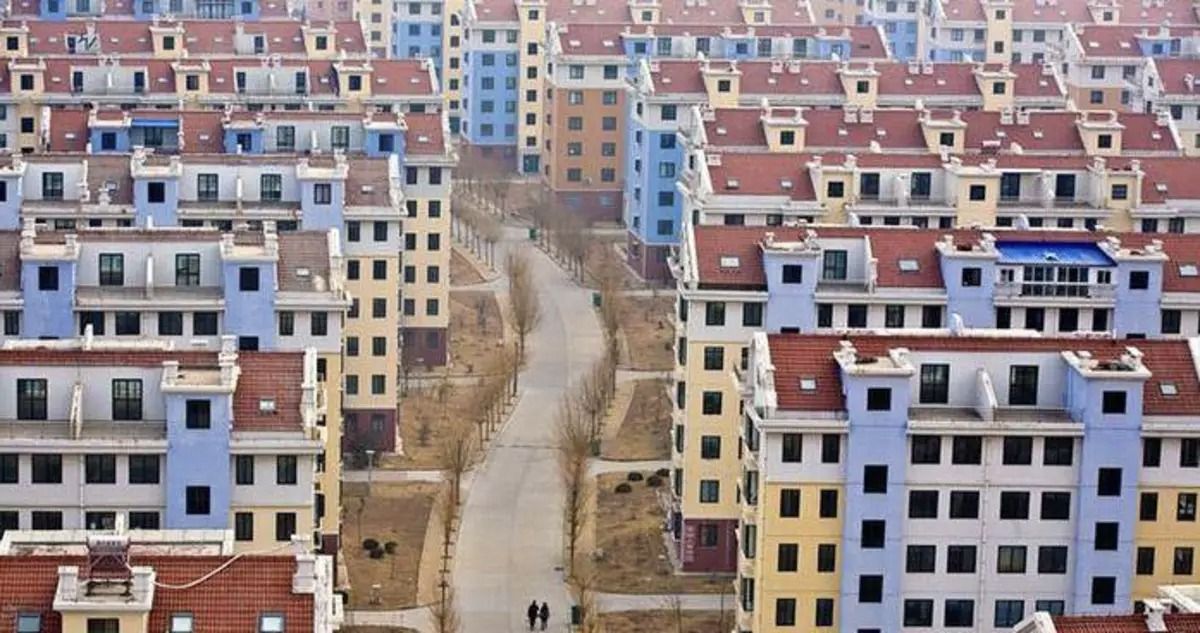Unfulfilled Aspirations, Fractured Families Amidst China’s Unfinished Apartments; China’s Fluctuating Real Estate Market Has Many Dreams Shattered
China's real estate market has long been a focal point of global attention, and recent developments have only intensified that focus. Amidst a backdrop of rising housing prices, government interventions, and shifting economic dynamics, the market has experienced significant turbulence. China's real estate sector faces substantial challenges from fluctuating property prices, regulatory measures, and data accuracy issues. Hence, the implications of these factors on homebuyers have left many battling with loans and unfulfilled promises.

China’s Real Estate Crises
The property debt crisis that began in 2021 has left thousands of homeowners facing multiple predicaments nationwide as smaller developers grapple with liquidity issues and industry giants narrowly dodge default.
Existing home prices, especially in prime neighbourhoods of major metropolitan areas like Shanghai and Shenzhen, are reported to have fallen significantly.
Amidst this housing crisis, concerns about the Chinese property market’s true health are surfacing. While official government statistics suggest only modest declines in home prices, private data sources and property agents tell a different story.
However, experts believe that China’s official home-price indexes may not accurately capture the extent of the market downturn due to their methodology, which relies on surveys rather than transaction data.
This discrepancy raises questions about the availability and accuracy of economic data in China, especially given the government’s increased restrictions on information access.
Simultaneously, it also leads to concerns about whether policymakers have a clear understanding of the market as they devise measures to stimulate demand; this ambiguity may discourage potential homebuyers from entering the market until price declines are reflected in official data.
China’s housing statistics bureau has defended its methodology, citing the use of the Laspeyres price index and surveys for existing-home prices. However, experts argue that such survey-based data may not effectively capture market dynamics during downturns, potentially hindering informed decision-making.

Broken Dreams And Unfinished Apartments
The plight of unfinished apartments and the broader issues within China’s property market emphasize the challenges and uncertainties facing homeowners, investors, and policymakers as they navigate this complex landscape.
Shi Tieniu, a construction worker, invested in a pre-sale apartment in an industrial city in Shaanxi province, northwestern China, with promises of it being a “superior product” to be passed down through generations.
However, after eight long years, all that remains is an incomplete structure and every night, Shi must ascend 20 flights of stairs to sleep in a rudimentary room devoid of basic amenities such as water, heating, or electricity.
Shi, now 39, who moved into the Gaotie Wellness City complex in May, says, “I almost never drink water, wash my face, or brush my teeth. I want this to be finished as soon as possible, so my elderly parents have somewhere to spend their final years… I have no money now, I’ve lost my family property, and all that’s left is this unfinished building.”
Shi, alongside a handful of distressed homebuyers, resides in this forsaken block in Tongchuan City and is part of a nationwide movement aimed at pressuring authorities to address the issue of “rotting” or incomplete homes, a problem exacerbated by a prolonged property downturn that has pushed numerous developers into bankruptcy and left others grappling with immense debt.
Unfortunately, there appears to be little hope in sight; a report by UBS predicts that property sales and construction will remain stagnant, stabilizing at only 50-60% of the peak levels seen in 2020-21. This stagnation is attributed in part to a decline in population growth and a slowdown in urbanization.

Sales Continued But Not Construction Work
Shi purchased his apartment in 2015 for 276,000 yuan ($38,000), two years after Tongchuan New District Qianjinfang Real Estate began construction on what was advertised as a luxurious 12-block complex with “CEO-level service.”
Construction stalled repeatedly since 2015, but the sale of flats continued until 2020, according to residents who cite multiple housing contracts with changing developer and project names.
Frustrated buyers have organized numerous protests at the city government since 2019, and although Tongchuan officials claimed to have formed a committee in 2020 to resolve the issue, construction has yet to resume.
Shi’s neighbours include retirees who purchased apartments for their unmarried sons and labourers who cannot afford alternative housing. To enter the complex, residents navigate an overgrown field, passing abandoned construction equipment to reach a hole in the wall.
Solar-powered lamps offer meagre illumination, casting light on bare concrete walls and floors caked with dust and gravel. Communal living is challenging, with a first-floor shared kitchen equipped with only a single gas burner and a makeshift metal shed serving as the communal toilet.
In the communal living area, phrases like “strength in numbers” and “live in a new home soon” are scrawled on the windows. A resident surnamed Gao, who paid 240,000 yuan for a flat in 2018, laments, “My life savings were spent here. My son is still unmarried. I’m already 60, and I won’t be able to climb so many stairs in a few years.”

Declining Property Prices Raise Concerns Amidst China’s Real Estate Market
In Hangzhou, the city near Alibaba’s headquarters, some neighbourhoods have witnessed a substantial decline in home prices, ranging from 25% to 28% since the peak around October 2021.
Similarly, in Lianyang, a popular downtown area in Shanghai, where expatriates and financiers often reside, residential prices have dipped by 15% to 20% from their record highs in mid-2021.
Even as of March, before a fresh slowdown in the market, over half of tier-2 and tier-3 cities saw existing-home prices plummet by more than 15% from their peaks, according to a report by Guolian Securities Co.
Economists referred to data from KE Holdings Inc., a provider of existing housing transaction services. The economists cautioned that the actual declines from peak values could be even steeper since the agency’s data collection began only in November 2018.
Even China’s top-tier cities, once considered resilient against housing downturns, have not been immune. In Shenzhen, existing home prices in at least five popular districts have declined by 15% over the past three years, as reported by the property research institute Leyoujia in a July report and remains China’s least affordable housing market.
The divergence in perceptions about home prices is partly due to the extensive range of policy tools available to Chinese authorities.

While countries like Australia, Singapore, or the United States often resort to tightening loan-to-value limits or raising interest rates to manage housing markets, China has additional measures at its disposal, such as restricting home purchases for non-locals or capping the number of properties an individual can own.
The complexity of housing price statistics further complicates the situation. Bert Hofman, former China country director for the World Bank and now at the National University of Singapore, remarked, “The weaknesses in housing price statistics hardly make things better,” and he expressed concern that this could hinder the formulation of effective policies to stabilize the market.
The Chinese government also intervenes directly in setting home prices.
Since most new homes are sold before construction is complete, regulatory authorities employ a “pre-sales permit” system to establish the prices at which developers intend to sell these properties. This approach has successfully kept new-home prices in major cities relatively stable since 2016, even when existing-home values surged.

However, when prices began to decline, this system contributed to moderating the decline in new residences despite a significant slowdown in the market.
Yan Yuejin, a research director at E-house China Research and Development Institute, emphasized that this price discrepancy has created confusion in the housing market, with some popular new projects appearing red-hot while suburban projects struggle to sell.
Existing home prices have also been subject to distortions in recent years. Since 2021, several major cities have implemented a “reference rate mechanism” for the existing-home market, substituting market-based prices with government-suggested prices to cool excessive home-buying activity.
Moreover, there has been a longstanding practice of creating separate contracts with lower existing-home prices for tax purposes, leading to official transaction prices appearing artificially lower than actual market prices.
Obtaining accurate real transaction prices is challenging, as per Guo, a Shanghai-based property agent, who explained that transaction data often reflects the artificially low prices reported to authorities by buyers and sellers rather than the actual prices paid.
In a real estate market where the accuracy of information is questionable, potential homebuyers may hesitate, and determining future policy responses becomes more challenging.
Lu Ting, chief China economist at Nomura Holdings Inc., noted, “Beijing has already taken some measures to ease tensions in the property sector, but the pace and scale have been insufficient. At some point, Beijing may be compelled to implement more measures to counteract the downward spiral.”
The Last Bit, The exploration of China’s real estate, it becomes evident that uncertainty looms large. The rollercoaster ride of fluctuating property prices, government interventions, and data challenges accentuates the need for a comprehensive and informed approach.
Homebuyers face daunting challenges and decisions, and policymakers must carefully calibrate their responses.




